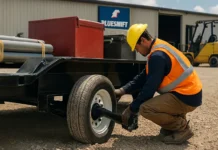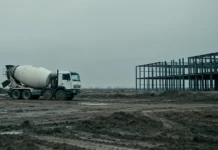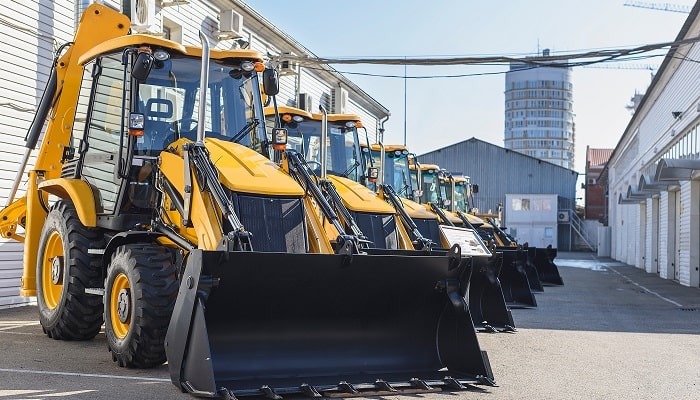Have you ever walked onto a job site and tripped over an extension cord, dodged a precariously balanced ladder, or played a real-life game of Tetris trying to pull equipment out of a crowded storage container? If these scenarios sound familiar, your construction equipment storage practices might need an overhaul.
Proper storage of machinery and tools is crucial on any construction site. When equipment isn’t stored safely and efficiently, it can lead to damaged gear, project delays, and even injuries. That said, this article will discuss effective techniques to help you keep your assets in top shape, maximize your storage space, and create a safer, more productive job site.
1. Clean And Prepare Equipment Before Storage
Before placing any machinery into storage, such as site storage containers from Royal Wolf, it’s essential to clean and prepare it thoroughly. Remove any dirt, debris, or buildup from the exterior and interior. Wash away caked-on mud or grime. Cleaning prevents these materials from hardening and becoming more difficult to remove later. It also allows you to inspect the equipment closely for any damage that needs repair.
2. Store Equipment Indoors Whenever Possible
The best practice is to always store equipment indoors in a garage, barn, or storage facility. Indoor storage protects from elements like rain, snow, wind, and sun that can degrade components over time. It prevents rust, fading, and other damage. Indoor facilities also offer better security and access control to prevent theft or vandalism.
3. Perform Maintenance And Inspections During Storage
Don’t let maintenance lapse just because equipment is in storage. Perform regular checks and maintenance tasks according to the manufacturer’s storage guidelines. This may include running the engine periodically, checking fluid levels, inspecting for leaks or damage, and ensuring batteries maintain their charge.
Create a maintenance checklist for each machine to track what tasks need to be completed at what intervals. Catching any issues beforehand prevents them from worsening and keeps the equipment in good working order, ready to use as soon as it’s needed again.
4. Implement Strong Security Measures
Construction equipment is a common target for thieves, so strong security is a must, especially for outdoor storage. Invest in quality fencing and gate access control. Install bright lighting and security cameras with remote monitoring capabilities. For high-value machinery, consider GPS tracking devices that alert you if equipment is moved.
Implement an equipment check-out/check-in system and designate specific personnel for access. Use unique keys or key cards rather than generic or universal ones. The more layers of security, the better protected your valuable assets will be, giving you peace of mind.
5. Organize Inventory And Maintain Documentation
Create a detailed inventory of every machine, attachment, tool, and material in storage. Record the make, model, serial number, value, condition, and location. Use tags or labels on each piece of equipment to identify it. Maintaining organized records saves significant time and stress.
In addition to an inventory list, keep all equipment documentation like ownership papers, certifications, maintenance logs, and manuals in one place. Proper documentation is critical for insurance, warranty claims, compliance, and resale value.
6. Protect Sensitive Components And Materials
Certain components and materials require extra care in storage. Disconnect and remove batteries, storing them separately in a cool, dry place. Prevent tires from developing flat spots by slightly overinflating them, using tire cradles, or rotating the position periodically.
Drain fluids from lines that could freeze. Cover fragile electronics and control panels. Use proper containers and labels for spare parts, liquids, or chemicals, and store them in spill-proof areas. A little extra protection for vulnerable components goes a long way.
7. Invest In Climate-Controlled Storage For Sensitive Equipment
For machinery with sensitive components like electronics, hydraulics, or specialty parts, climate-controlled storage is worth the investment. Fluctuating temperatures and humidity levels can degrade rubber seals, wiring, and fluids. Climate control maintains a stable environment to prevent this damage.
Climate-controlled storage is also a must if you need to store any materials like adhesives, paints, or sealants that are temperature-sensitive. The cost of renting a climate-controlled space is much lower than having to replace expensive damaged components later.
8. Regularly Evaluate And Optimize Your Storage Practices
Implementing these best practices is an ongoing process. Regularly evaluate how your storage facility and practices are working. Are you still using all the equipment you’re storing, or could you sell some to free up space and capital? Is the location convenient and secure? Are maintenance tasks being completed properly and on schedule?
Stay up to date on new technologies and equipment management techniques that could improve your storage operations. Solicit feedback from your team on what’s working well and what could be better. Continuously optimizing your storage practices will keep your equipment in top shape and your business running smoothly.
9. Ensure Legal Compliance And Sustainability
Ensuring that storage practices comply with local and federal regulations is essential to avoid legal penalties and maintain a company’s reputation. Also, adopting sustainable storage practices can help reduce the environmental impact and resonate with clients and stakeholders concerned with sustainability.
10. Implement Training And Personnel Development
Educating staff on the importance of proper storage techniques and regular maintenance is fundamental. Well-trained personnel are more likely to identify potential issues before they escalate and can contribute to the overall efficiency of the storage system.
Conclusion

Storing construction equipment properly is just as important as maintaining it on active job sites. By implementing these best practices, you’ll extend the life of your machinery, reduce repair costs and downtime, and improve the overall efficiency of your construction business. Remember that investing in innovative storage solutions and staying diligent about maintenance protects the significant investments you’ve made in your equipment fleet.





























